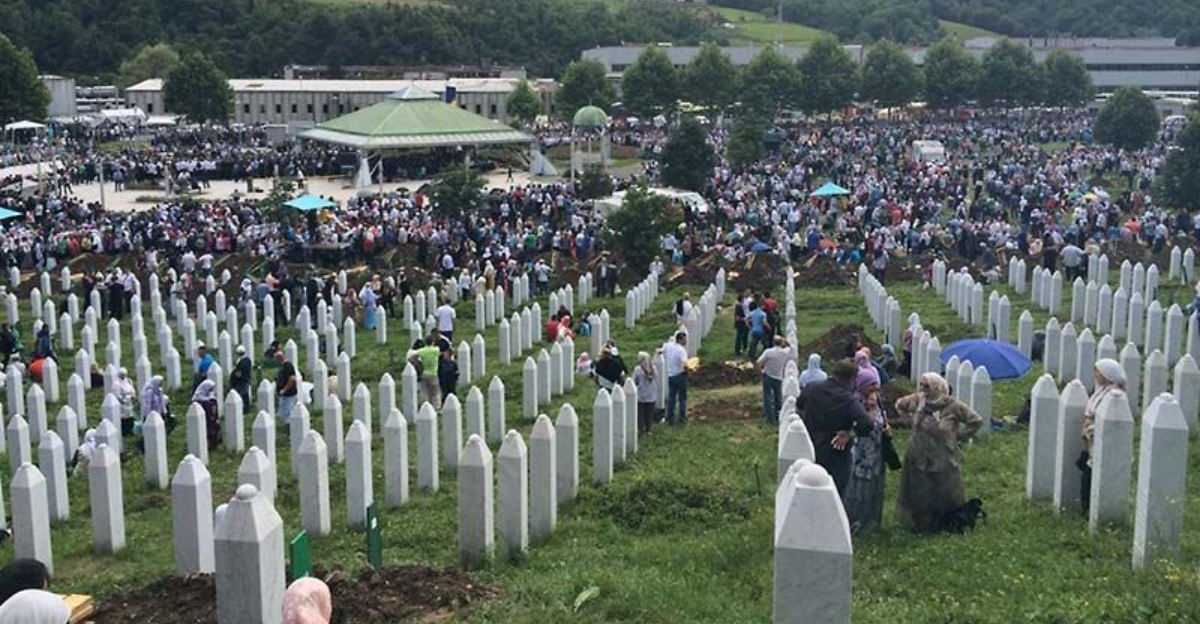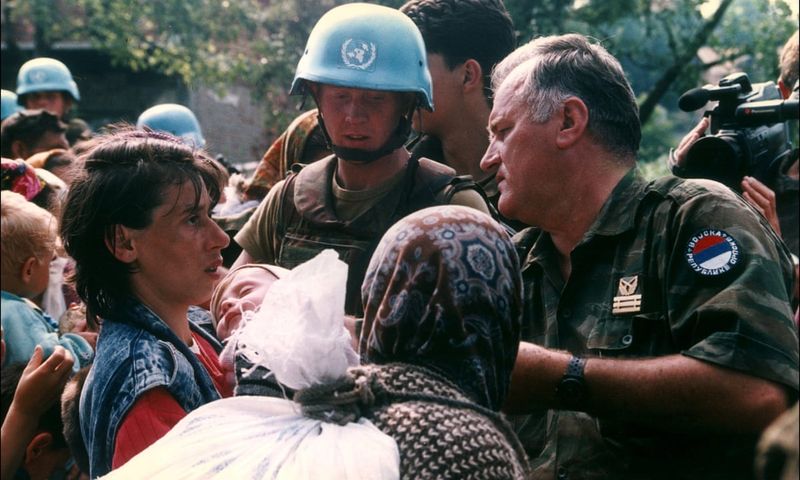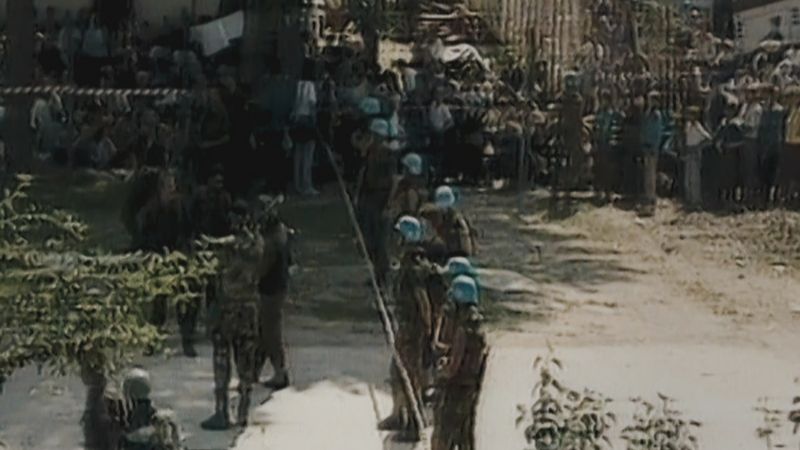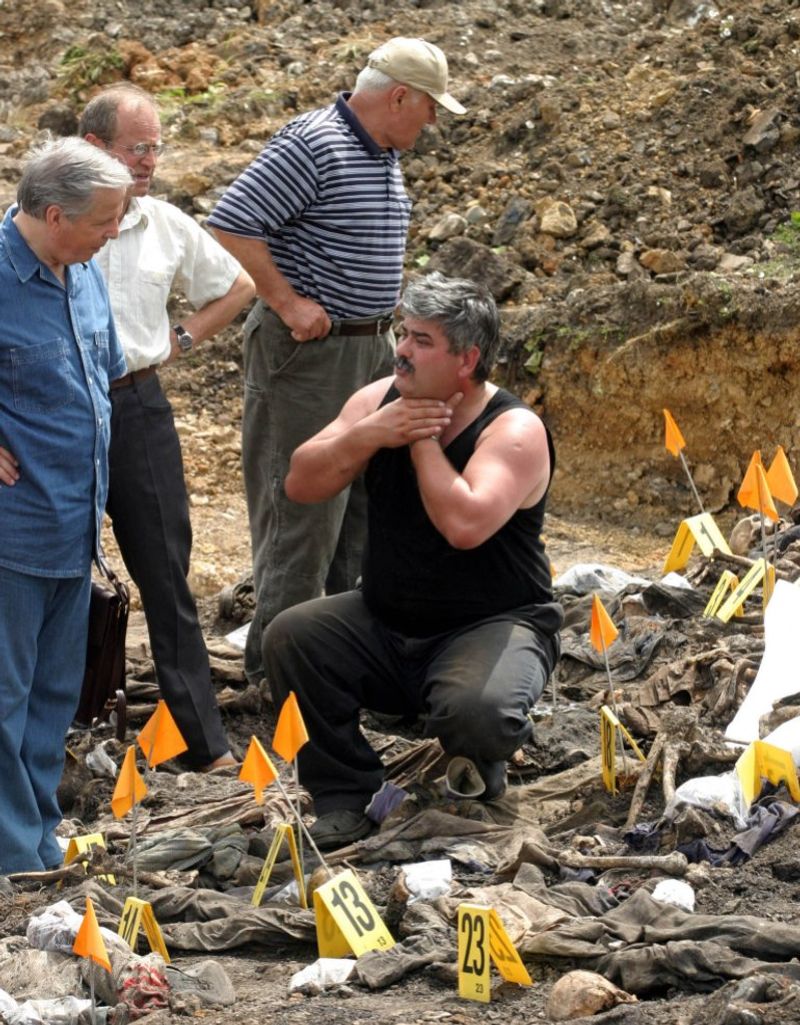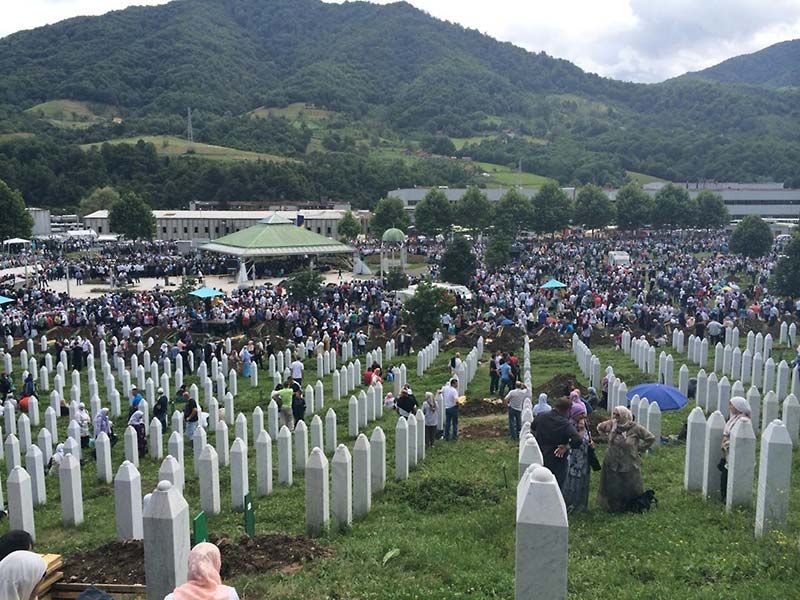The Srebrenica genocide remains a stark reminder of human cruelty and international failure. Despite the passage of 30 years, Bosnia’s wounds from this atrocity have not healed. Through ten critical items, we delve into the events of July 1995, the ongoing struggles for justice, and the broader implications for Bosnia and the world.
1. The Horrors of July 1995
In July 1995, the picturesque town of Srebrenica became the site of the worst atrocity in Europe since World War II. Bosnian Serb forces, with chilling precision, executed over 8,000 Bosniak men and boys. Families were torn asunder, with women and children expelled under duress. The UN-declared “safe area” was anything but, as terror unfolded, unchecked. The faces of mothers and sisters, etched with despair, linger in memory as the world reflects on these dark days. The town’s peace was shattered, leaving scars that refuse to fade with time.
2. The UN’s Failure to Protect
The blue helmets of the Dutch UN peacekeepers symbolized hope, yet they stood powerless in Srebrenica’s defining hour. Outgunned and outnumbered, their inability to act speaks volumes of international impotence. The UN’s unwillingness to intervene remains a haunting reminder of collective failure. As the Bosnian Serb forces advanced, the peacekeepers’ presence seemed more symbolic than effective. This failure reverberates through history, highlighting the dire consequences when protective mandates fall short. Survivors and activists continue to question the world’s commitment to prevent such tragedies.
3. Mass Graves & Identification Efforts
Hidden beneath the earth, mass graves tell a story of horror. Bosnian Serb forces attempted to erase evidence by reburying bodies. Forensic teams, armed with patience and technology, have exhumed over 6,000 bodies, painstakingly working to return names to the nameless. Yet, over 1,000 remain missing, casting long shadows over families seeking closure. DNA technology offers hope, but the process is fraught with anguish. Each identification is a bittersweet victory for families long trapped in limbo. The relentless pursuit for truth continues unyielded.
4. Justice & War Crimes Trials
In the halls of justice, figures like Radovan Karadžić and Ratko Mladić faced their reckoning. Sentenced to life, their trials at the International Criminal Tribunal stand as milestones in international law. Yet, beneath the surface, justice remains elusive. Many mid-level perpetrators walk free, casting doubt on the completeness of justice served. Denial of the genocide persists, undermining the tribunal’s efforts. These trials, while significant, highlight the complexities of achieving true justice. The tribunal’s legacy is mixed, inspiring but also cautionary.
5. Genocide Denial & Revisionism
Despite overwhelming evidence, pockets of denial persist, fueled by political agendas. Serbian and Bosnian Serb leaders sometimes downplay the genocide, sowing seeds of revisionism. This denial not only distorts history but also fuels ethnic tensions that simmer beneath Bosnia’s surface. Efforts to rewrite or minimize this dark chapter impede healing and reconciliation. It’s a battle for truth, waged in speeches, media, and policy, where history’s victims are again marginalized. The quest for acknowledging the past remains fraught with challenges and resistance.
6. Survivors’ Trauma & the Mothers of Srebrenica
In the face of unimaginable loss, the Mothers of Srebrenica emerged as pillars of resilience. These women, bound by grief, channel their pain into activism. They tirelessly fight for justice, remembrance, and recognition of the horrors endured. The specter of PTSD looms large, affecting many survivors who grapple with memories and poverty. Yet, these mothers embody strength, advocating for a future where such tragedies are prevented. Their journey is one of sorrow and resolve, a testament to human endurance. Their cries continue to echo for justice.
7. Political Divisions in Bosnia Today
Bosnia, a nation still scarred by war, struggles with deep-seated political divisions. The Republika Srpska, where some leaders glorify war criminals, stands at odds with the Federation of Bosnia & Herzegovina, pushing for justice. This chasm fosters instability, hindering the country’s progress. Ethnic lines dictate politics, where narratives often clash, preventing unified governance. The specter of past conflicts looms large, as efforts to bridge divides face resistance. Bosnia’s political landscape is a complex tapestry of history, trauma, and aspiration.
8. The Role of International Community
On the global stage, Bosnia’s future hangs in the balance. The West urges reform, seeking to guide Bosnia towards stability. Yet, Russia and Serbia, with vested interests, often side with nationalist factions, complicating reconciliation endeavors. This external influence is a double-edged sword, shaping Bosnia’s path. While international support is crucial, it also creates dependency and friction. The push and pull of global politics play out vividly in Bosnia, where alliances shift and historical ties influence current events. The international community’s role is both pivotal and contentious.
9. Memorials & Remembrance
In the quiet solemnity of the Srebrenica-Potočari Memorial Center, history’s weight is palpable. Each grave stands as a testament to lives lost, stories silenced. Every July 11, mourning fills the air, as new burials continue the cycle of remembrance. Yet, amidst this somber reflection, political tensions endure. Serb officials often boycott ceremonies, casting a shadow over commemoration efforts. These memorials are more than mere markers; they are crucial in preserving truth and fostering healing. As visitors pay their respects, the call for unity resonates quietly yet powerfully.
10. The Fight for a United Future
Amidst the shadows of the past, a new generation seeks change. Young Bosnians, weary of divisive rhetoric, strive for a future unburdened by ethnic discord. Nationalist voices remain loud, but the desire for harmony grows stronger. Education, dialogue, and acknowledgment of history become tools for healing. This fight for unity is both challenging and inspiring, with the youth at its forefront. Through shared experiences and aspirations, they envision a Bosnia where peace and progress thrive. Their journey is a beacon of hope in a landscape marked by scars.
